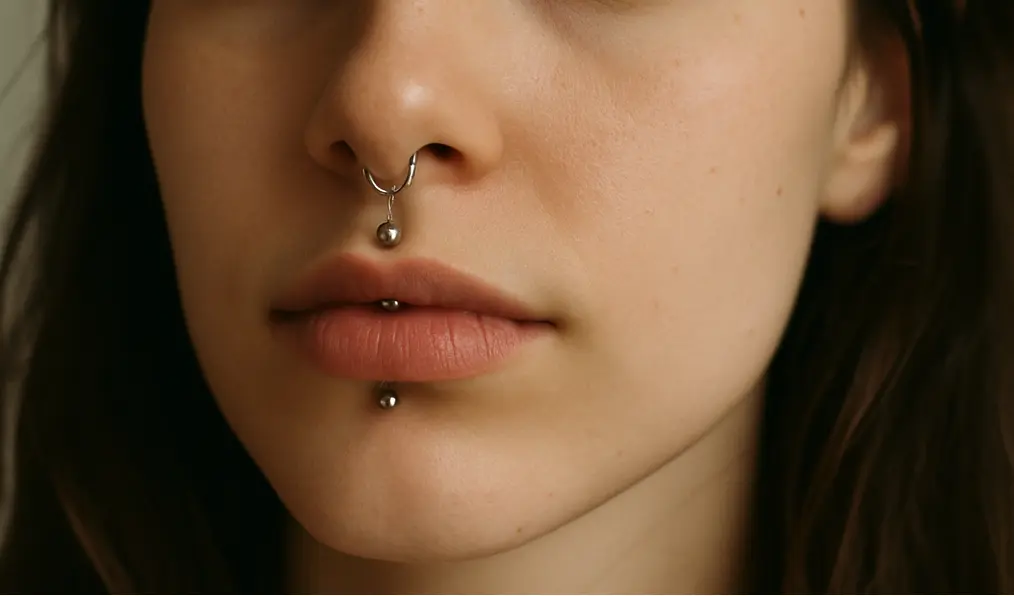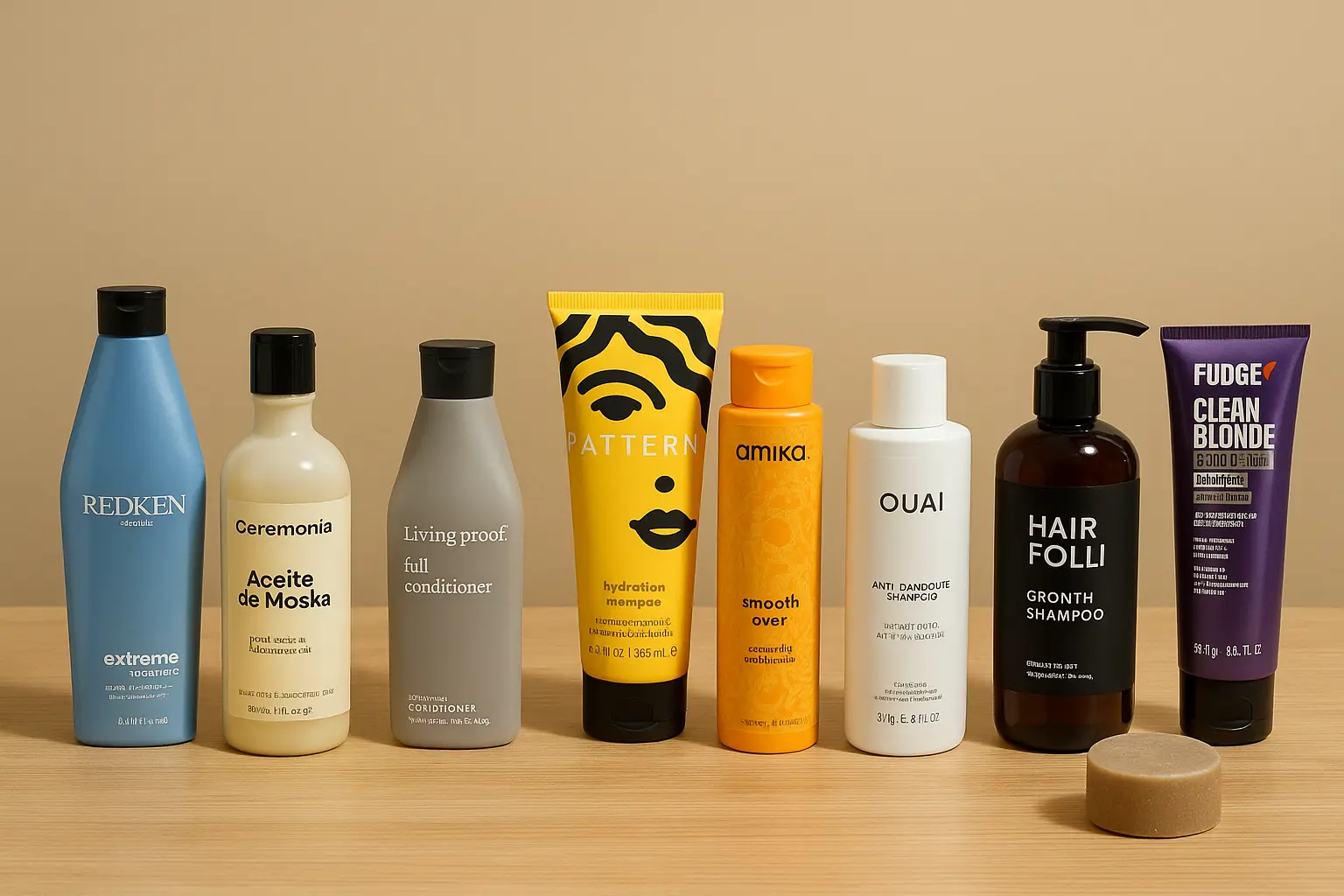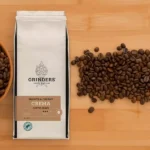Now Reading: Jestrum piercing in Australia: Cost, care & style ideas
-
01
Jestrum piercing in Australia: Cost, care & style ideas
Jestrum piercing in Australia: Cost, care & style ideas

Across Australia’s bold and expressive body art scene, the jestrum piercing has emerged as a standout choice among modern lip piercings. This bold style, often referred to as the vertical medusa, pierces vertically through the philtrum, the groove between the upper lip and nose, creating a lifted, balanced aesthetic. Whether you’re lounging on the beach in Fremantle or walking through Fitzroy’s artistic Laneways, this article will cover what Australian piercers need to know, from healing and discomfort levels to jewellery variations and upkeep.
What is a jestrum piercing?
A jestrum piercing is a vertically aligned lip piercing that passes through the philtrum and emerges just beneath the nose, without extending into the oral cavity. Usually performed with a curved barbell, it resembles two little beads on the upper lip. Its orientation is like that of the medusa (philtrum) piercing; the needle moves vertically instead of straight back.
Medusa vs jestrum piercing: What’s the difference?
Although both focus on the philtrum, there are key differences:
- Medusa piercing: Goes horizontally through the philtrum with a single visible stud above the lip.
- Jestrum piercing: Has two visible ends—one above and one at the top of the upper lip.
- Medusa piercings usually use flat-backed studs; jestrums require curved barbells.
- Jestrum piercings tend to move more and protrude slightly due to their vertical placement.
Why Aussies are loving the jestrum look
Beyond being edgy, the jestrum piercing is visually stunning. Australians, from Sydney’s fashion-forward Surry Hills to Brisbane’s alternative music scene, are starting to find this look appealing because of its symmetry and originality.
Beyond being edgy, the jestrum piercing is visually stunning. Australians from Surry Hills to Brisbane’s alt scene are embracing the trend for its balance, uniqueness, and versatility.
Here’s why it’s trending:
- Popular material options for customising your jewellery include classic gold, durable titanium, and eye-catching opal.
- For people who wish to stand out and keep a clean look.
- This piercing accentuates other facial Piercings, including septum or nasal piercings.
How painful is a jestrum piercing?
While pain tolerance varies, jestrum piercings typically rate 5 to 6 out of 10 on the discomfort scale. The philtrum area has more nerve endings than other parts of the lip, but the procedure is quick and the pain usually subsides within minutes.
What to expect during the procedure
- Your piercer will record sites of entrance and exit.
- A sterile needle is used to pierce vertically through the philtrum.
- A curved barbell is inserted immediately.
- You’ll receive full aftercare instructions.
Healing time and aftercare tips
Healing Time:
On average, the jestrum piercing takes 8 to 12 weeks to heal, depending on your aftercare and skin type.
Aftercare tips for Aussies (especially in warmer climates):
- Keep the piercing clean by applying a sterile saline spray every morning and night.
- Steer clear of bending or manipulating the jewellery.
- Avoid using any makeup or skincare products near your piercing while it’s still healing.
- Avoid chlorine pools entirely, especially in early healing.
- Steer clear of spicy foods and smoking if you have sensitivity to either.
Pro tip: During Australia’s hot summers, regularly wash your face and carefully pat it dry to lower the possibility of sweat or bacterial harm to the site.
Potential risks and things to watch out for
Like other forms of body modification, jestrum piercings involve inherent hazards. Choose a respectable Australian piercer operating in a licensed, clean environment.
Common complications include:
- Swelling and bruising (especially in the first week).
- Migration or rejection (if the body doesn’t accept the piercing).
- Infection, particularly if aftercare is poor.
If you notice redness, pus, or intense throbbing, consult a piercer or healthcare professional.
Choosing the right jewellery for your jestrum
Once healed, the fun begins—you’ll be able to rotate through a diverse collection of jewellery options. Australians, especially those in humid and coastal environments, might prefer hypoallergenic materials.
Top picks:
- Titanium curved barbells – Ultra-light and perfect for Aussies with sensitive skin or metal allergies.
- Gold or rose gold – Sophisticated finishes that stay stylish and durable over time.
- Bioplast – Soft, bendable, and a great pick for everyday wear or extended healing periods
- Gem-set or opal beads – add sparkle and personality.
Standard sizing ranges from 16g (1.2mm) in thickness and 6–10mm in length, depending on your anatomy.
Cost of jestrum piercing in Australia
Pricing will vary by city and studio, but generally, you can expect:
- $70 to $120 AUD, including basic jewellery.
- Premium jewellery or upgraded materials may cost extra.
- Follow-up check-ups are often included in the price.
Though they usually provide more options for jewels and skills, major metropolitan studios in Melbourne, Sydney, Brisbane, and Perth may have somewhat higher rates.
Is the jestrum piercing right for you?
While trendy and eye-catching, jestrum piercings require commitment and may not suit everyone.
Ask yourself:
- Can you carry on the road to healing, free from intervention?
- Will it affect the attire policy in your company or university?
- Curious what it’s like to wear a piercing smack bang in the middle of your face?
If you answered yes, jestrum could become your next fave body modification!
Frequently asked questions
Can I hide a jestrum piercing for work?
Its conspicuous location makes hiding challenging; however, in certain situations, smaller, skin-toned beads or retainers could be helpful.
Can I wear lipstick after getting it?
It is advisable not to apply makeup to the area for the first two weeks. Once healed, you might be able to enjoy lipstick once more; still, use care while applying.
Will it leave a scar if I remove it later?
Maybe, despite many others who report merely a little dot or dimple. Your skin type and piercing length will help to decide scarring.
Conclusion
The jestrum piercing is more than a fashion trend—it’s a bold, balanced way for Australians to express individuality. With a skilled piercer, proper aftercare, and a touch of Aussie flair, this piercing can become a defining part of your personal style. So, whether you are in Byron Bay, Adelaide or somewhere in between, a jestrum may be the lip upgrade you have been looking for.



























